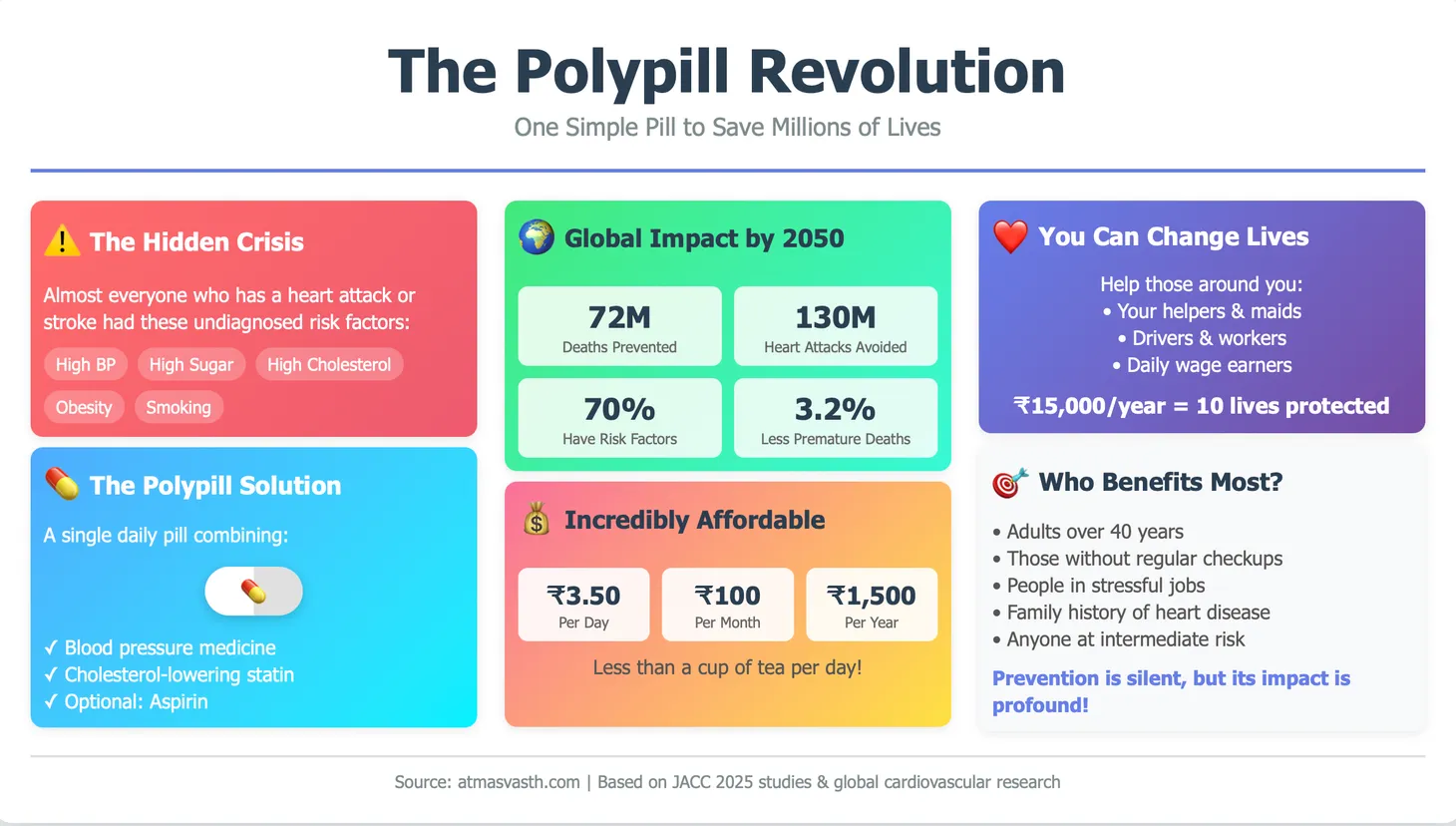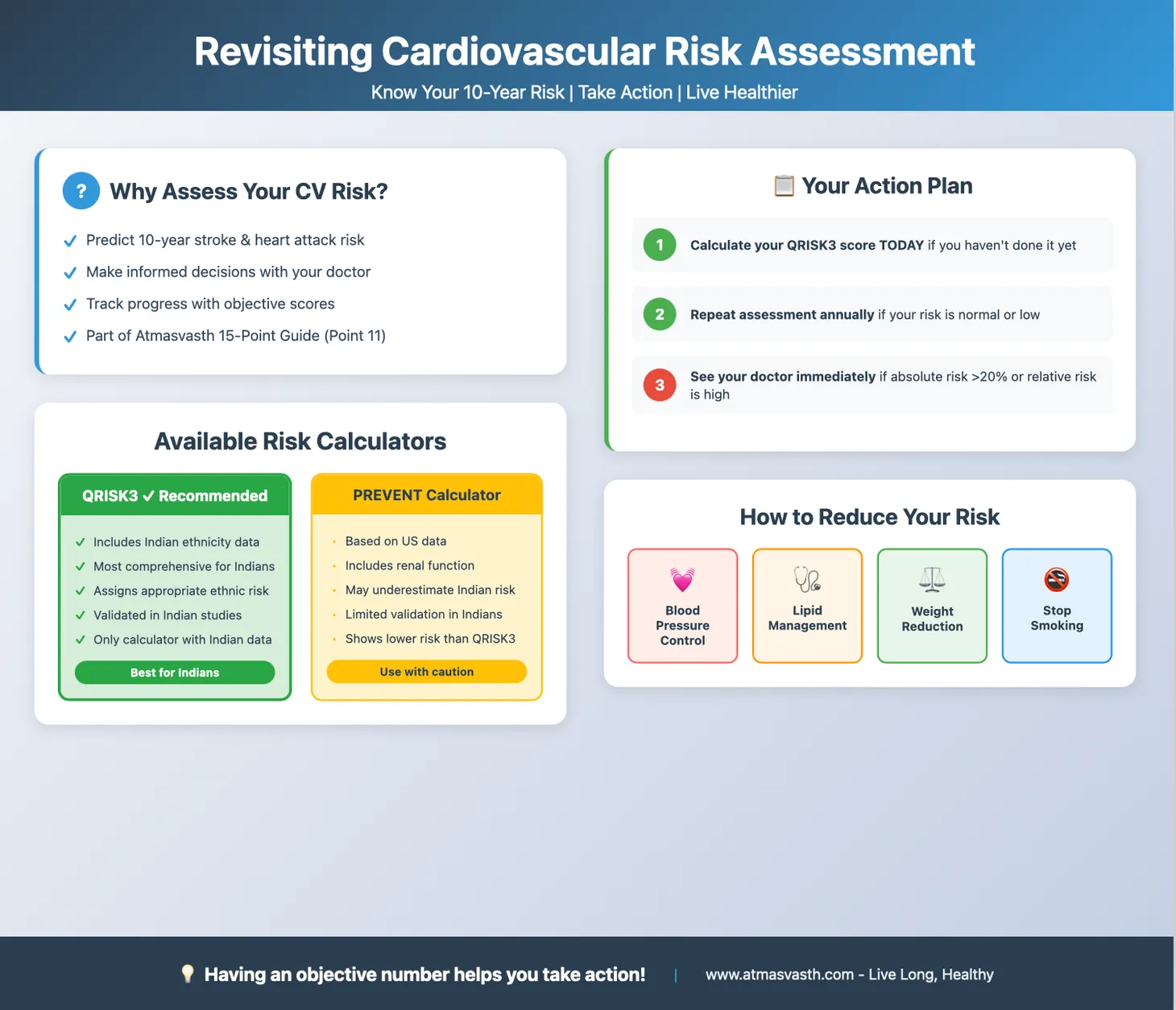The Cardiovascular Syndemic - 5 Threats, 1 Battle
High blood pressure, high fasting plasma glucose, high lipids, smoking and overweight/obesity are the 5 epidemics that together form a syndemic that needs to be tackled together and aggressively.
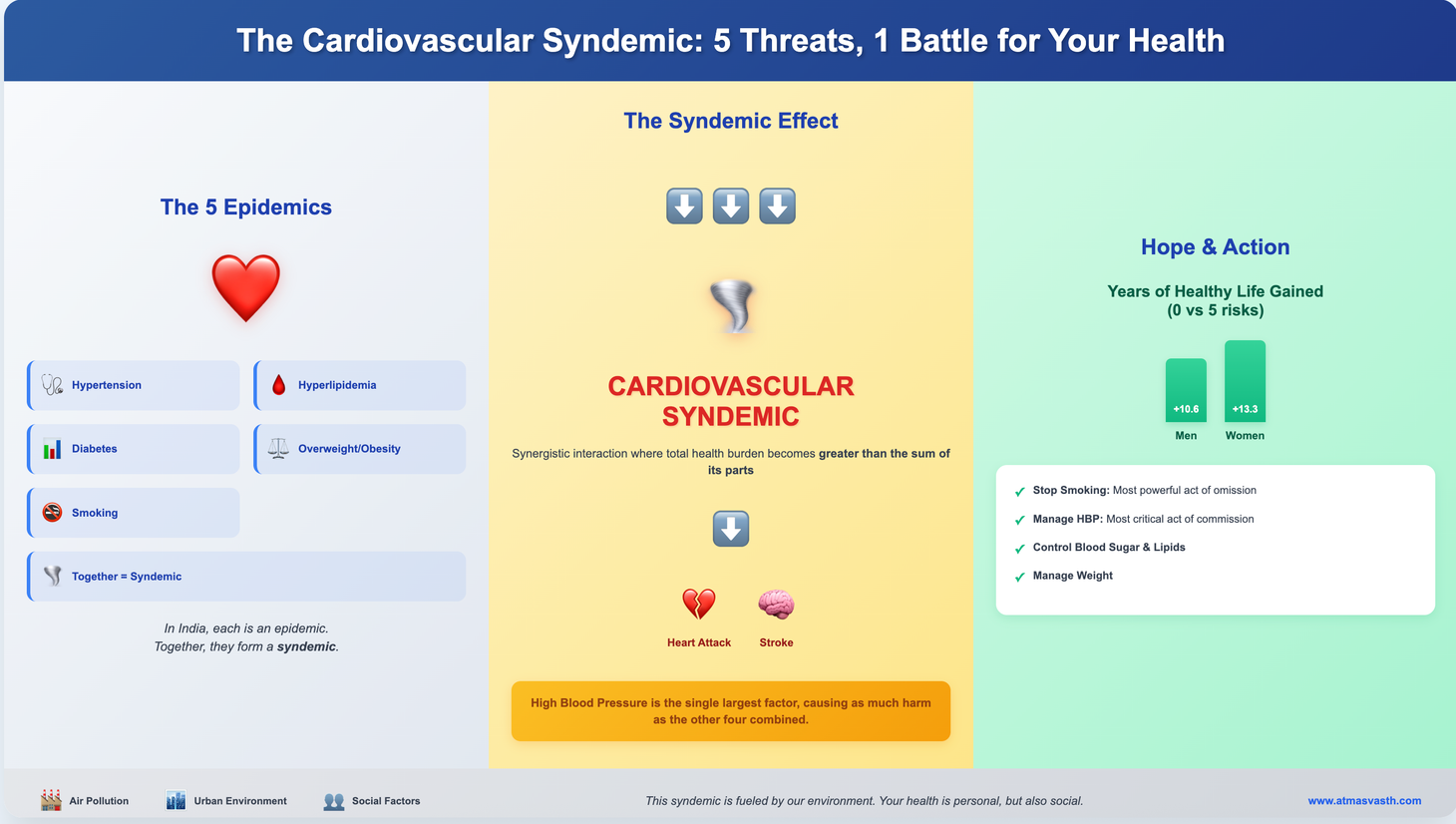
The Book

The Detailed 15-Point Guide to Live Long, Healthy
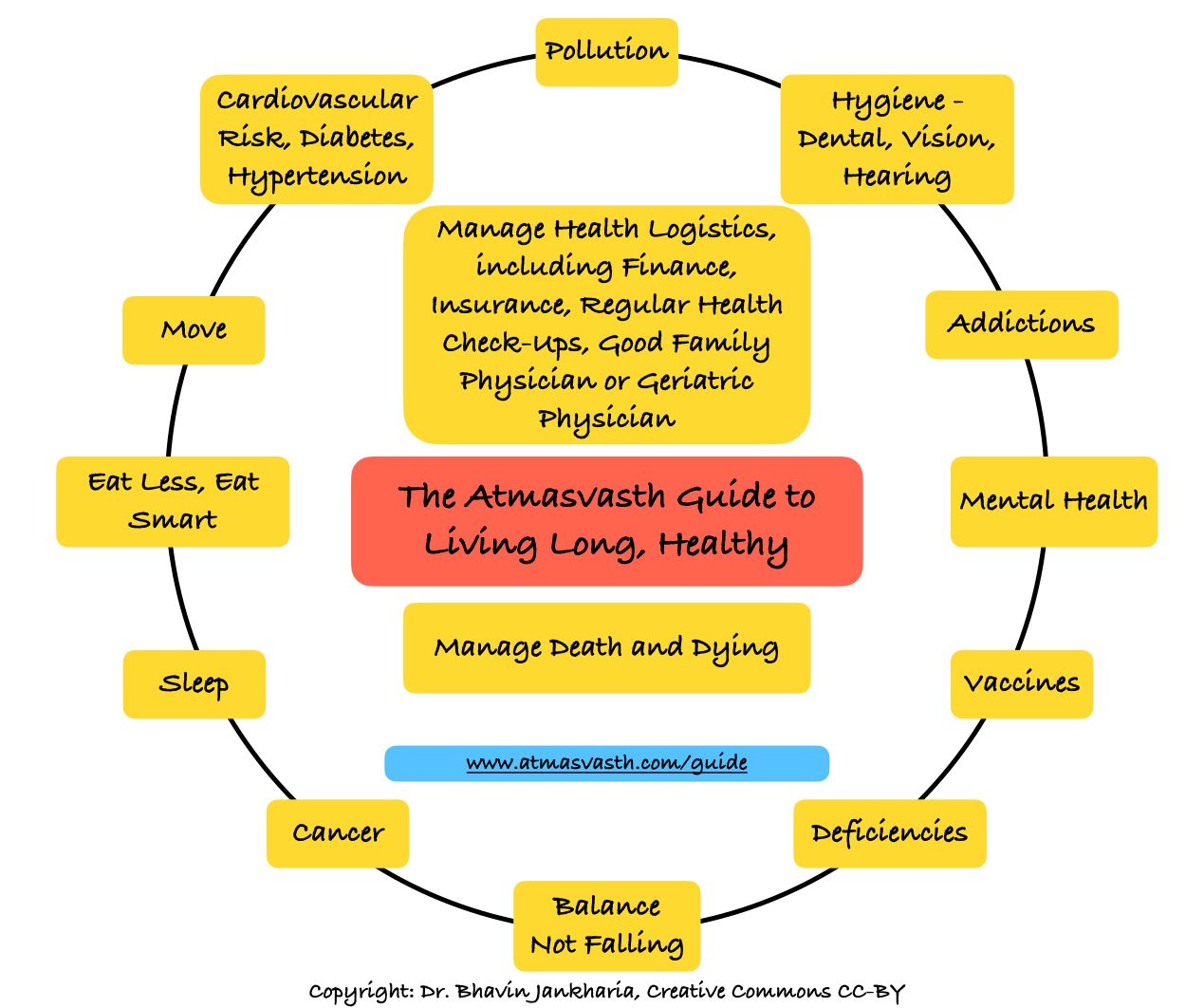
Audio
Soundcloud
YouTube
A YouTube version of the audio is also now available here.
Text
In Apr 2025, I wrote a piece titled “Is It Too Late to Change or Can We Turn Things Around Even after Age 55?” The piece was based on a recent NEJM paper that examined cardiovascular (CV) risk factors and their impact on lifespan and mortality [1].

The five factors:
- absence of arterial hypertension (systolic blood pressure < 130 mm Hg)
- absence of hyperlipidemia (non-HDL cholesterol less than 130 mg/dl)
- absence of diabetes
- absence of smoking
- absence of underweight or overweight or obesity
At age 50, men who had none of these risk factors lived 10.6 years longer without CV disease than those with all 5 risk factors, while for women, the difference was 13.3 years. Those who had only 2 or 3 of these risk factors were in-between.
More importantly, those who modified their risks between ages 55 and 60 also gained. Those who stopped smoking gained the most, followed by high blood pressure (HBP) control, with additional years gained depending on how many more factors were controlled.
I ended by saying, “many of us, especially those of us currently in our 60s did not really take care of our health or even start thinking about the concept of living long, healthy until we turned 50. Many of us often wonder if it is worth changing now and whether that will make a difference to any damage already done. The good news is that even if we start modifying these factors after the age of 55, there is significant benefit, the two most important factors being one act of omission (not smoking) and one act of commission (managing HBP). Just as with physical activity, it is never too late to start changing things.”
Each of these; HBP, high fasting plasma glucose (FPG), hyperlipedemia, smoking and overweight/obesity are in the top 10 Indian list of killers and disability respectively, as seen in these Global Burden of Disease charts for India. Each is an individual epidemic.
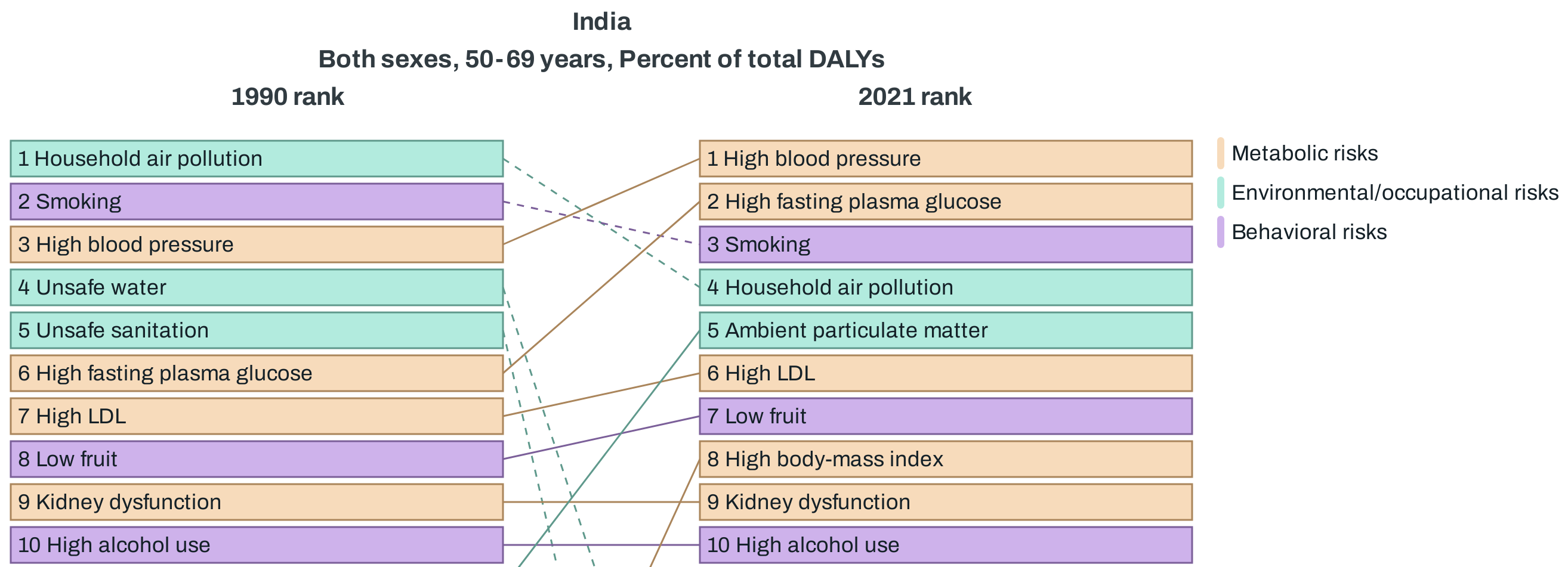
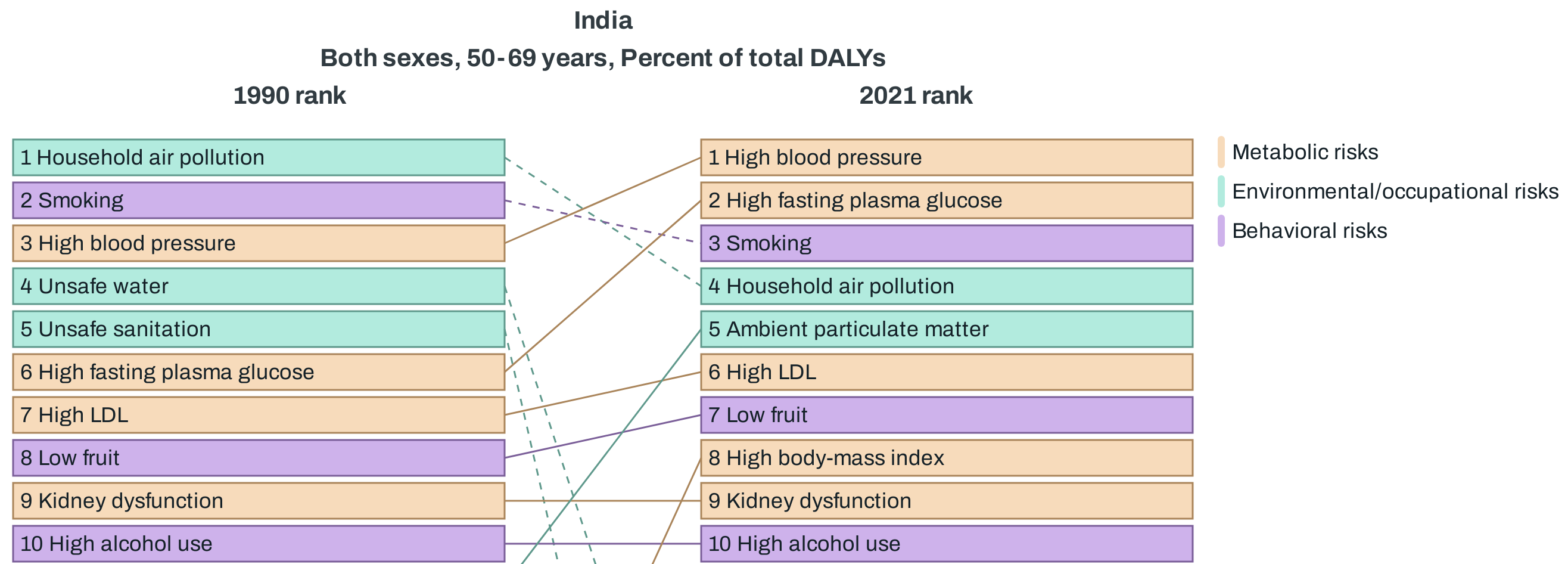
These 5 epidemics in turn cause CV diseases and clusters of diseases that in turn lead to death and disability of significant proportions, compared to say cancer, where the first cancer, lung cancer comes in as a cause of death only at no. 15.
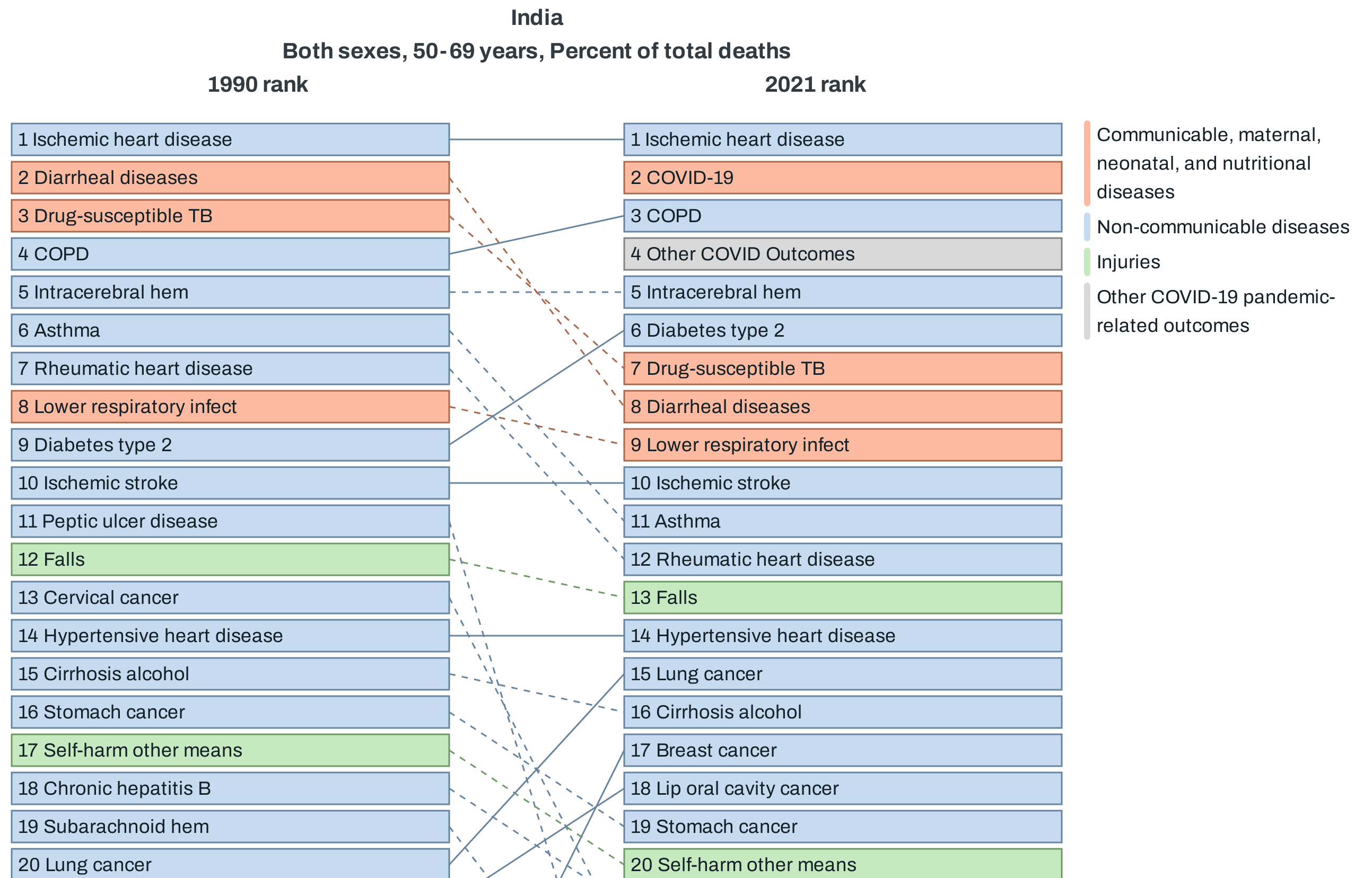
In short, if you can control CV risk by controlling HBP and FPG and lipid levels, not smoke and reduce overweight/obesity and after the age of 70, not fall, you would pretty much be ensuring a significantly long healthspan and lifespan for yourself.
Clustered together, these five epidemics constitute a syndemic. The syndemic theory first proposed by Merrill Singer [2] in the late 90s is defined as a “synergistic interaction of two or more coexistent diseases and resultant excess burden of disease”. One of the examples he gave was of HIV and TB, both epidemics in their own right, synergistically worsening outcomes if they occur together in the same patient.
A recent paper in JACC by Bryan Chong and colleagues [3] has clustered these 5 modifiable factors into a CV syndemic, because they all need to be managed together and not in isolation. You can’t control HBP alone and not bother about high lipid levels or high FPG levels. You can’t stop smoking but live with HBP. The idea is to tackle all 5 together. Two of these, overweight/obesity and smoking need behavioral changes, though with the advent of GLP-1 agonists, which are changing the landscape for overweight/obesity, you could argue that now only smoking remains a behavioral issue.
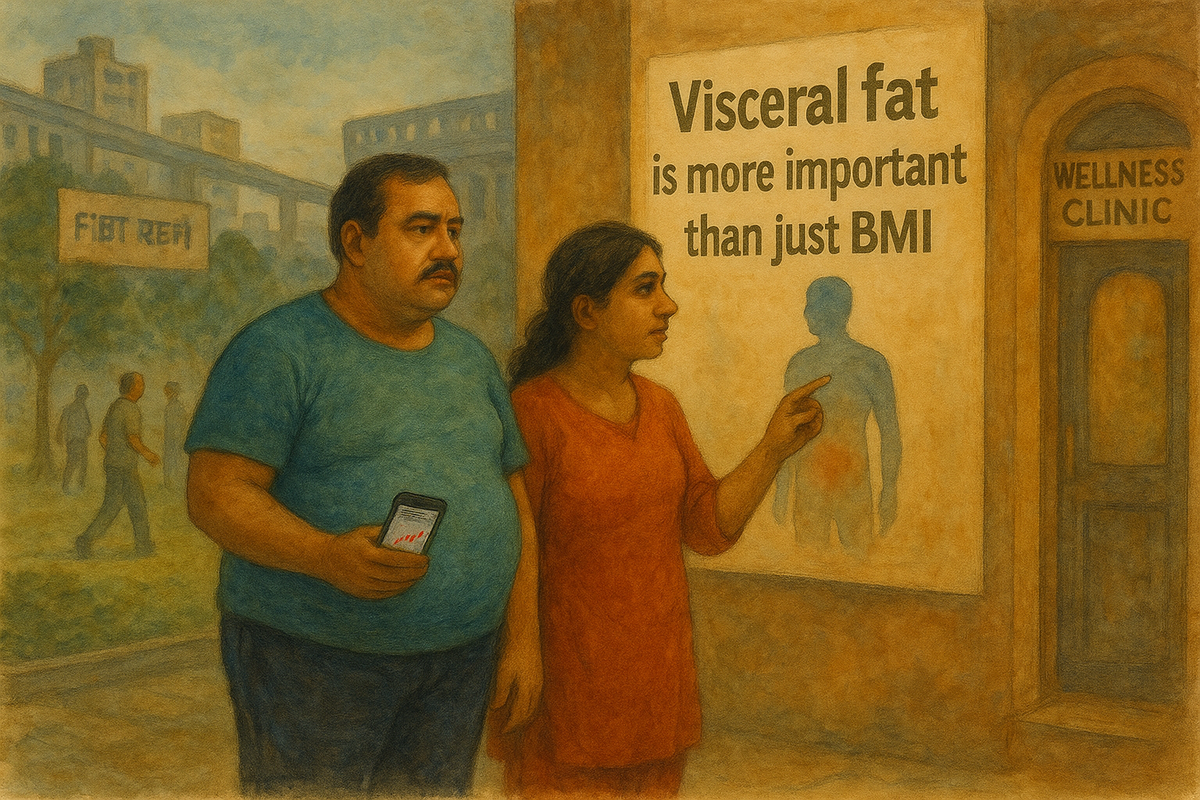
Of these HBP remains the single largest factor responsible for death and disability worldwide equal to the sum of death and disability caused by all the other 4 factors combined, as the accompanying editorial comment [4] mentions and which is also true in India as the 2021 GBD data shows.

Chong’s paper estimates that by 2050, blood pressure issues will worsen, with tobacco smoking improving but that things will still be bad as this figure from his paper shows, especially in low and middle income countries including South Asia.
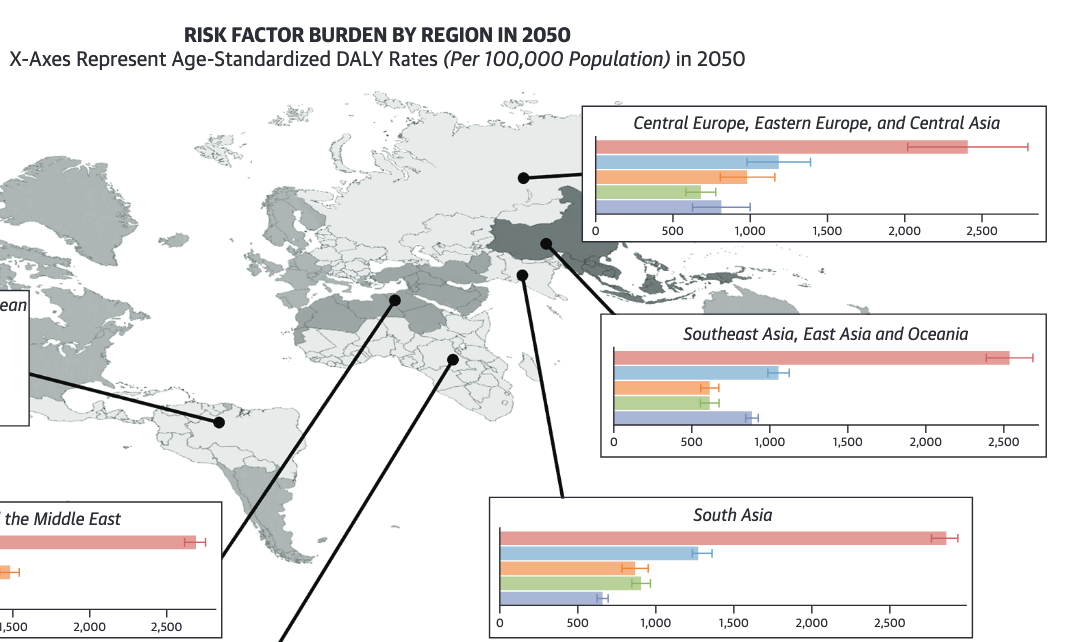
Yet, these five factors together (constituting the syndemic of CV risk factors) accounts for only half of the CV risk in the world and 20% overall mortality, which means there are other factors responsible for CV deaths such as air pollution as the previous image shows, food scarcity, poverty and other adverse social determinants that synergistically add to the risk of death from CV disease. Even the richest person in India living in polluted Mumbai or Delhi would have a higher mortality risk than a middle income person living in say Norway or Sweden, even if both of them were equally well controlled for these 5 risks, because of the added issues related to pollution, quality of life, support systems, etc.
As the authors of the editorial comment say, “Syndemic theory aims to move beyond the common biomedical concepts of comorbidity and multimorbidity and account for the social, economic, environmental, commercial, and political factors that interact with health conditions.”
What does this mean for you and I? While physical activity, sensible eating and good sleep are important to keep you healthy, if you have HBP, high FPG and high LDL (low density lipoprotein), you must correct for these with medicines, if lifestyle factors don’t work. Stop smoking if you are still smoking. And as I mentioned in my last piece on visceral obesity, if you have visceral obesity and you can’t reduce it with lifestyle measures, perhaps the use of GLP-1 agonists will make a big difference.
What happens next? In the next piece, I will discuss why diabetes control also cannot be looked at in isolation and separated from all the other syndemic factors and then in the third paper, I will bring up the issue of what it is that we can do for others around us, after we have taken care of ourselves to make an impact to the overall CV health of the people around us.
Footnotes
1. Global Cardiovascular Risk Consortium; Magnussen C, Alegre-Diaz J et al. Global Effect of Cardiovascular Risk Factors on Lifetime Estimates. N Engl J Med. 2025 Mar 30. doi: 10.1056/NEJMoa2415879.
2. Singer M, Clair S. Syndemics and Public Health: Reconceptualizing Disease in Bio‐Social Context. Med Anthropol Q. 2003 Dec;17(4):423–41.
3. Chong B, Jayabaskaran J, Jauhari SM, Chia J, Le Roux CW, Mehta A, et al. The Global Syndemic of Modifiable Cardiovascular Risk Factors Projected From 2025 to 2050. Journal of the American College of Cardiology. 2025 July;86(3):165–77.
4. Schwartz JI, Ssinabulya I, Kayima J, Longenecker CT, Ross HJ, Mendenhall E. Syndemic Interactions and Cardiovascular Risk Factors. Journal of the American College of Cardiology. 2025 July;86(3):178–80.
Atmasvasth Newsletter
Join the newsletter to receive the latest updates in your inbox.



